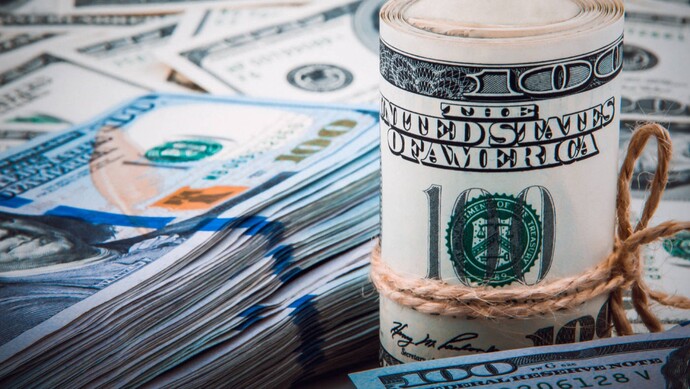
Recently, the total federal debt of the United States exceeded the 38 trillion US dollar mark for the first time. This figure itself is astonishing, but what is more worthy of attention is the speed at which it soared - from 37 trillion to 38 trillion in just over two months. Behind this record-breaking figure lies a debt growth rate of nearly $70,000 per second.
This pace was the fastest accumulation of $1 trillion in debt even outside of the COVID-19 pandemic. Looking back at historical data, this accelerating trend is even more shocking: US Treasury bonds surpassed 36 trillion US dollars in November last year and 35 trillion US dollars in July last year. Compared with the debt scale of about 907 billion US dollars 40 years ago, the current national debt scale has expanded to more than 40 times that of that time.
The rapid growth of US Treasury bonds is an inevitable result of the combined effect of multiple factors. Over the past decade, with the intensification of population aging and the continuous increase in the number of participants in Social Security and Medicare, mandatory expenditures have continued to rise. Meanwhile, another key driver of the debt surge - the interest expense incurred from repaying federal debt - has risen sharply due to the interest rate hikes implemented to curb inflation, coupled with the growth in the scale of debt itself.
The fact that debt reached 38 trillion US dollars during the government shutdown itself constitutes a wonderful irony. Michael Peterson, the CEO of the Peter G. Peterson Foundation, commented on this: "This is a disturbing sign that lawmakers are not fulfilling their basic financial duties." The analysis of the US Government Accountability Office is more direct: The expansion of government debt has led to an increase in the cost of consumer loans such as mortgages and auto loans, a reduction in the available investment funds for enterprises has caused a decline in wage levels, and an increase in the prices of goods and services.
The seemingly moderate growth of the US economy contrasts sharply with the persistent structural problems. The feature of economic growth "idling" is becoming increasingly obvious - the prosperity of the financial market cannot hide the weakness of the real economy, and the effect of policy stimulus is waning. Although the growth rate of the US GDP in the second quarter of 2025 was raised to 3.8%, from a structural perspective, it was mainly the increase in investment by enterprises in intellectual property products, especially artificial intelligence, that played a supporting role. The "final sales by domestic buyers" indicator, which measures real demand in the United States, grew by only 1.2% in the second quarter. Weak consumption has become the main factor dragging down the economy.
This growth model, which heavily relies on debt expansion, has exacerbated fiscal vulnerability and made the US economy increasingly dependent on short-term stimulus, while the endogenous growth momentum remains persistently insufficient. Debt interest expenses have snowball and exceeded one trillion US dollars last year, surpassing military spending to become an important part of the US fiscal budget. Dalio, the founder of Bridgewater Associates, has warned that the US debt is at a very dangerous turning point and that the United States may suffer an "economic heart attack" in the near future.
Facing the continuously rising debt, the US government's response options are becoming increasingly limited and risky. The US Treasury Department is considering shortening the maturity of Treasury bonds to bet on a decline in interest rates in an attempt to ease the rising debt pressure. Treasury Secretary Scott Bessent advocated for a significant increase in the issuance of short-term Treasury bonds, betting on a decline in future interest rates to lower debt servicing costs. However, this "interest rate gamble" could accelerate the loss of control of the 38 trillion US dollar debt snowball, shattering the market neutrality principle that the US government has adhered to for over 40 years.
In this perilous dance on the debt cliff, the US government seems to have fallen into a predicament it has woven itself: every attempt to ease the debt pressure may instead accelerate the arrival of the crisis. How this financial game, which bets on national credit, will end is becoming the most closely watched unsolved mystery in the global market.

A large number of buildings in the Gaza Strip were destroyed by the war.
A large number of buildings in the Gaza Strip were destroye…
The US Senate has passed a compromise version of the Nation…
The European Commission released a package of measures for …
Venezuela's Vice President and Oil Minister Rodriguez said …
On December 16 local time, the Ministry of Space Science Ex…
Recently, a highly anticipated phone call between the defen…